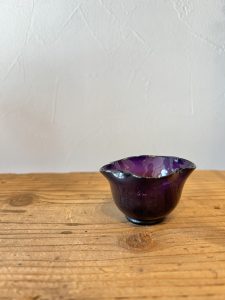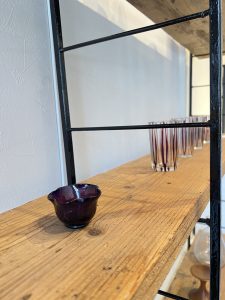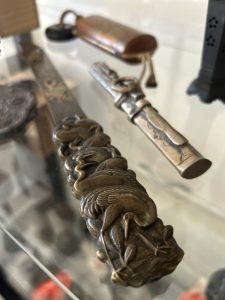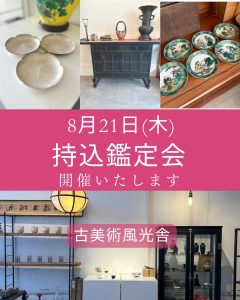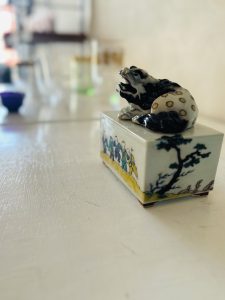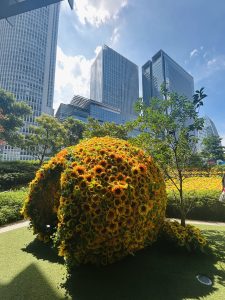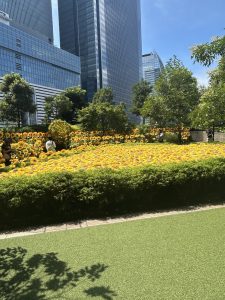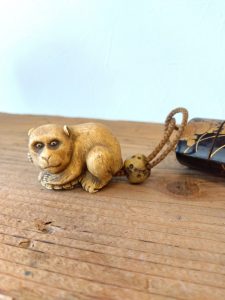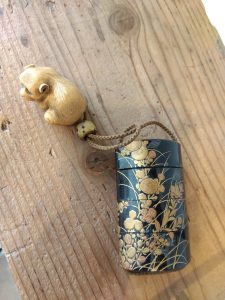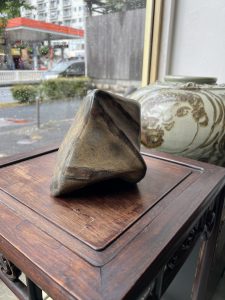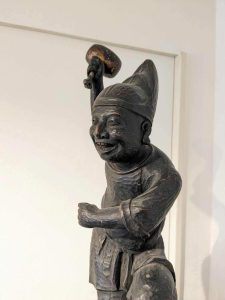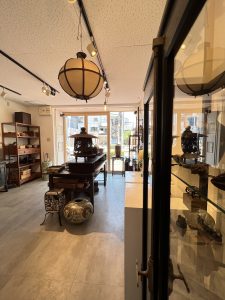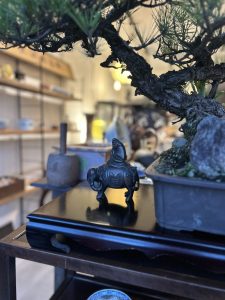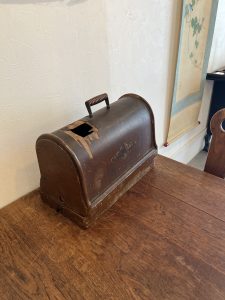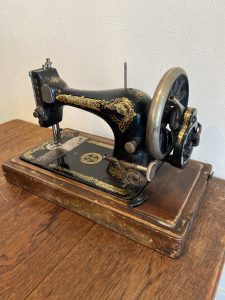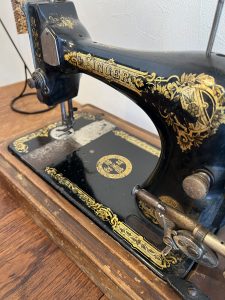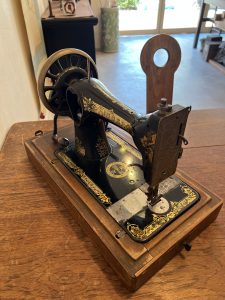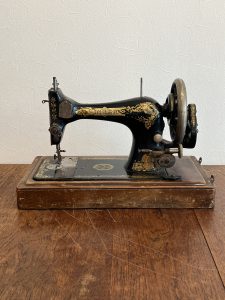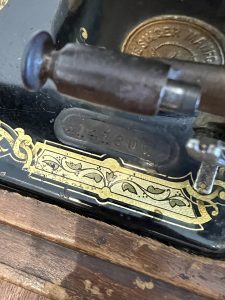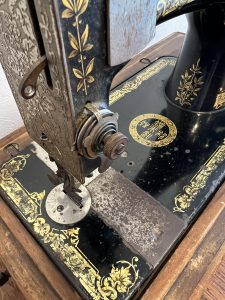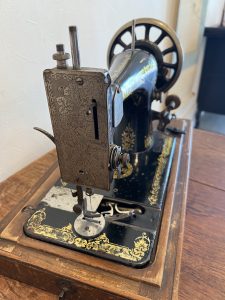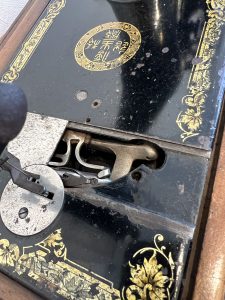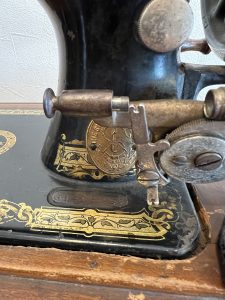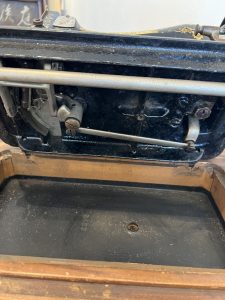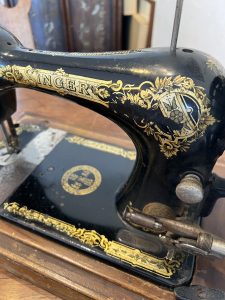世界の“maccha”になってきました(愛知県名古屋市千種区姫池通 骨董買取 古美術風光舎)
2025.08.22
買取のお仕事をしておりますと、このところ抹茶碗などの茶道具を買い取ってほしいといったお客様が多くおられます。以前はお嫁入り(この言葉ももうなくなってきましたが)のたしなみとしてお茶やお花のお稽古をされていた時代もあったり、茶道のお稽古をされていた方も多くいらっしゃいました。時代なのでしょうか、お道具を手放す方は本当に多い状況。
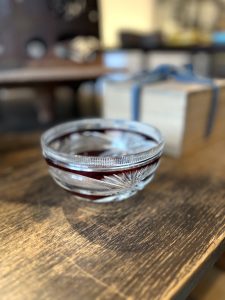
反対にこのところ世界中で抹茶ブームが到来のようでして、#maccha と検索して見ますと、緑のドリンクやスィーツの画像が一斉にあがってきます。お茶道具を買取させていただいてる身としては、この逆の流れに「はて?」と思ったり、「世界中の人がいよいよこの美味しさに気づいてしまったか…」などと抹茶アイスを味わいながら思ってしまうのですが、いよいよ抹茶の生産量が追い付かなくなり、各所で抹茶不足も懸念されているようです。
我々もそうなのですが、異国の地に赴いて現地の味にチャレンジした時に「これは美味しい」とか「これはちょっとお口に合わないな」なんていろいろ思う経験があると思いますが、逆に海外の人が世界中にブームになるほどおいしい!」と思える抹茶の要因はなんなんでしょうね。要は、知らない国の飲み物がここまでお口にあうとは…の、驚きです。
というのも、抹茶はその独特な苦味と深い風味が特徴。あの苦味や味わいにはすぐに馴染めたのかが不思議でして、我々が今現在コーヒを始めて飲んだ感覚と同じなのでしょうか、どんな味も意外とすぐに慣れてくるものなのでしょうか。いやいや、とはいえ納豆のように外国の方にははあまり理解できない味もあることですし、文化的な背景や個人の味覚、健康志向やビジュ映えは一旦置いておいて、癖になる抹茶の懐の深さを感じます。
調べてみると、抹茶の苦味は日本人にとっては非常に心地よいものですが、甘いものに慣れている外国の方々にとっては最初はやはり少し強く感じることが多いようであります。抹茶に含まれるうま味(アミノ酸)は上品で深い味わいを持っており、最初は苦味に驚く外国の方もいますが、徐々に抹茶の深い味わいや香りに魅了される人が多いようでして、外国の方にはその何とも言えない味わいがエキゾチックに感じるか。個人的には、コーヒー同様「苦味」って、人間に癖をもたらすんじゃないか…なんて邪推しているところであります。
それにもまして、ドリンクやスィーツになどの抹茶を使ったバリエーションも多く、どんな食材とも意外とマッチすることもあり、そのバリエーションの多さも驚きです。あ、でもそもそも味を受け入れられないと、バリエーションの多さもあったものではないのですが、お土産に様々な抹茶のお菓子を大量買いする外国の方の姿を見ていますと、いろいろ舌を飽きさせないすごいヤツだな…なんてあの緑に感心しています。
とまあ、こんなに抹茶がもてはやされているにもかかわらず、連日茶道具を手放す方の多さが自分の中では追い付かないくらいどんどん離れていくのですが、茶道具の世界も抹茶好きに届かないものか…などと、手放す抹茶碗を眺めながら思う次第です。
とはいえ抹茶は大好きでして、ちなみに自分が一番懐が深いと感じたのはシンプルに「抹茶塩」。
誰なんでしょうね、天ぷらにつけて食べると美味しいって気づいたのは笑。
それではごきげんよう。(スタッフY)
n my work as a buyer, I have recently had many customers asking me to purchase tea utensils such as matcha bowls. In the past, there was a time when many people practiced tea ceremony and flower arrangement as part of their dowry (although this term is no longer used), and there were also many people who practiced tea ceremony. Perhaps it is a sign of the times, but there are now many people who are willing to part with their tea utensils.
On the other hand, it seems that a matcha boom has arrived worldwide. When you search for #maccha, images of green drinks and sweets appear all at once. As someone who buys tea utensils, I sometimes wonder about this reverse trend, thinking, “Hmm?” or “Has the world finally discovered how delicious this is?” while enjoying matcha ice cream. However, it seems that matcha production is no longer keeping up with demand, and there are concerns about matcha shortages in various places.
We all have experiences where we try local flavors in foreign countries and think, “This is delicious” or “This doesn’t quite suit my taste,” but what factors make matcha so delicious that it has sparked a global craze among people overseas? It’s surprising that a drink from an unfamiliar country can be so appealing to the palate.
This is because matcha is characterized by its unique bitterness and deep flavor. It’s intriguing that people can quickly become accustomed to that bitterness and flavor. Is it similar to the feeling we had when we first started drinking coffee, or do we simply get used to any taste surprisingly quickly? However, there are also flavors like natto that are difficult for foreigners to understand. Setting aside cultural backgrounds, personal taste preferences, health consciousness, and visual appeal, I feel the depth of matcha’s appeal.
Upon researching, I found that while the bitterness of matcha is very pleasant for Japanese people, it can initially feel quite strong for foreigners accustomed to sweeter flavors. The umami (amino acids) in matcha have a refined and deep flavor, and while some foreigners may be surprised by the bitterness at first, many eventually become captivated by the depth of flavor and aroma of matcha. For foreigners, that indescribable taste might feel exotic. Personally, I sometimes speculate that, like coffee, “bitterness” might be what gives humans their unique character…
Moreover, there are many variations of matcha used in drinks and sweets, and it surprisingly goes well with various ingredients. The variety is truly astonishing. However, if one cannot tolerate the taste, the variety becomes meaningless. Seeing foreigners buying large quantities of matcha sweets as souvenirs, I am impressed by how they keep their palates from getting bored with such a remarkable green tea.
Despite all this hype around matcha, the number of people letting go of their tea utensils is growing so rapidly that I can’t keep up. I can’t help but wonder if the world of tea utensils could somehow reach out to matcha enthusiasts… as I gaze at the matcha bowls I’ve let go of.
That said, I do love matcha, and incidentally, the one I find most versatile is simply “matcha salt.” I wonder who first realized how delicious it is when paired with tempura? Haha.
Take care.
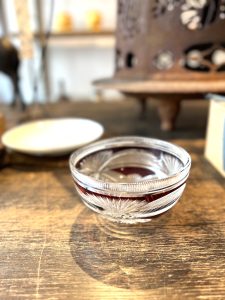
*******************
ご実家の整理やお片付けなどをされている方のご相談などが多くございます。
お片付けなどくれぐれもご無理のないようになさってくださいませ。
風光舎では古美術品や骨董品の他にも絵画や宝石、趣味のお品など様々なジャンルのものを買受しております。
お片付けをされていて、こういうものでもいいのかしらと迷われているものでも、どうぞお気軽にご相談下さいませ。
また風光舎は、出張買取も強化しております。ご近所はもちろん、愛知県内、岐阜県、三重県その他の県へも出張いたします。
まずは、お電話お待ちしております。
愛知県名古屋市千種区姫池通
骨董 買取【古美術 風光舎 名古屋店】
TEL052(734)8444
10:00-18:00 OPEN

